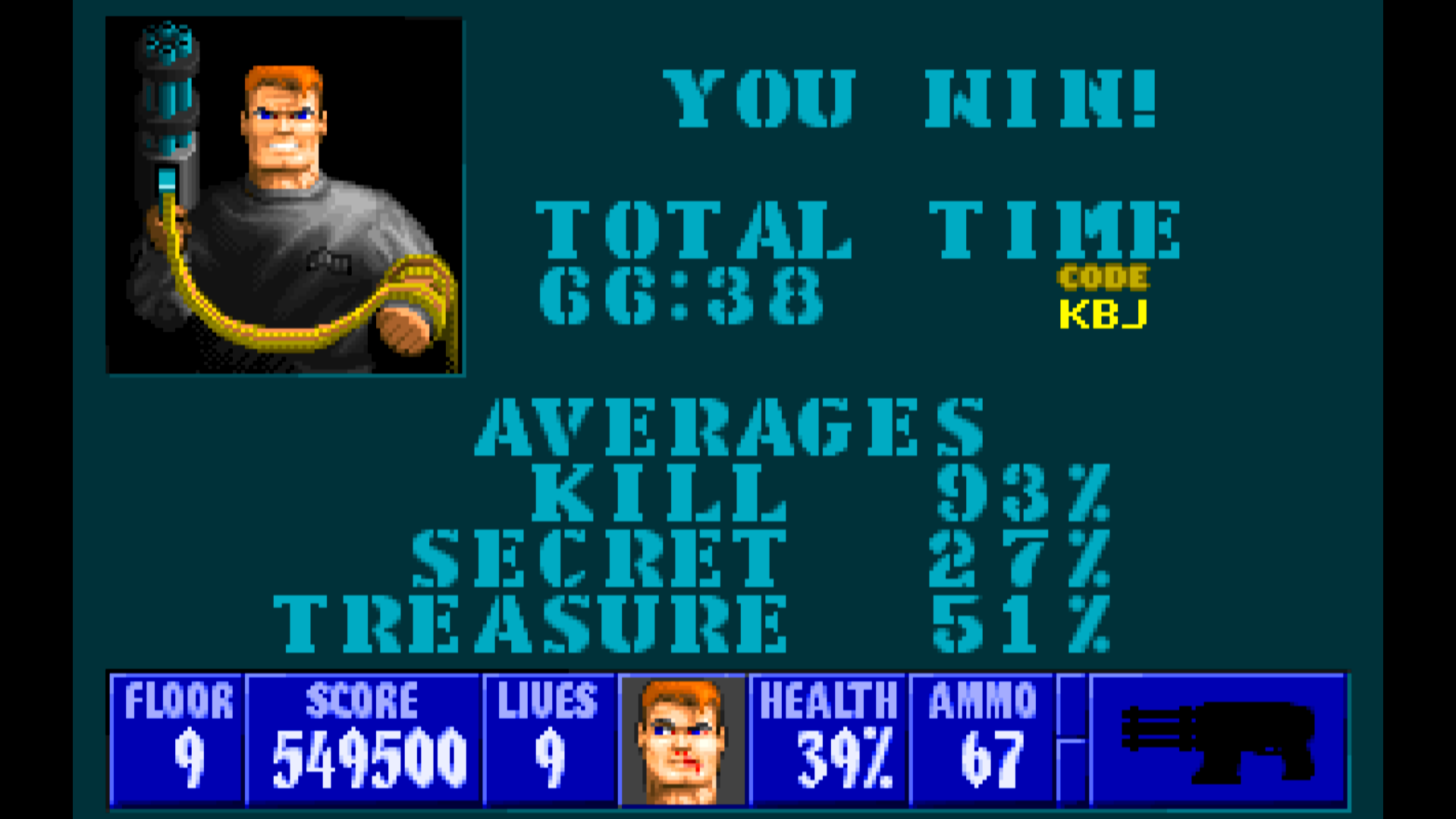When I was cutting my gaming teeth, the era of the arcade was almost over. While I played consoles mostly, I played Doom too (and Doom II) and I even played Wolfenstein 3D, at least a bit. Of course it wasn’t nearly as frightening or visceral or structurally complex as Doom, and eventually Half-Life blew my mind by making me feel like I was in that place, at that time, experiencing those events. But, Wolfenstein had a sort of mystique about it, like an ancient edifice discovered in the jungle.
Many years later I tried playing Wolfenstein again, and got bored pretty fast. It seemed very flat (literally and figuratively) and I can see where people are coming from who might call it a defunct stepping stone on the way to Doom and beyond. Then I watched Civvie 11’s video on Wolfenstein (2009) which caused me to go back and watch his video on the original again, and then I ended up playing the game myself, again, and this time I noticed something. I noticed that I had been ignoring 3 of the game mechanics in a game that only has 5. I didn’t play 60% of the game and then called it shallow.
In Wolfenstein 3D you do the following things:
- Find the end of the level
- Shoot dudes who try to stop you
- Find secrets
- Collect treasure
- Do 1 – 4 as quickly as possible
Strictly speaking, only #1 is necessary, while #2 is inevitable. And that’s how I had played the game before. Maybe this was the result of my inherent laziness, or maybe games like Half-Life, where forward progress is the sole metric of success, had taught me to play that way. In any case I decided not to play that way anymore, and it changed my perspective on the game quite a bit.
Computer games are largely about completing tasks, and a large part of effectively completing a task is effectively ignoring things irrelevant to it. If the goal of the game is to get to the end of the level, then every branching path or winding labyrinth that does not lead to that end is useless. And, if nothing you can see or find in the level teaches you how to get to that end, then there is little incentive to learn the level. Simply pressing forward, bouncing down halls and through doors like a pinball in a pinball machine, is the obvious “strategy”. You can play this game of blindly-barreling-forward that I’ve described inside Wolfenstein 3D, but that game isn’t Wolfenstein.
Any action that awards a player points is winning the game. Getting more points for an action is winning the game more. Rather than a punishment for failure (like dying and starting the level over), points are a favorable judgment of performance as an element of the game. Taking this judgement seriously has a direct effect on how important it is to pay attention to the level design in Wolfenstein.
If I find more treasure, I get more points (which means it is by definition part of winning the game), and since treasure can be anywhere in the level, every part of the level is relevant. And, therefore, remembering the level layout to ensure I’ve visited every possible part of it becomes part of my strategy. I can no longer afford to ignore the level design and plow ahead. And since I must pay attention to the level design, I end up appreciating the level design.
This same effect could be achieved without scoring points. You could just have the treasure, enemy, and secret percentage trackers and accomplish something similar. In fact, you could probably boil this observation down and say: If one of a game’s goals is to collect something scattered across its levels, the player is encouraged to gain knowledge of the levels’ structures, which leads to enjoyment of those structures.
And that’s a big difference. I’ve always heard people praise the level design of Doom, and I’ve praised it myself, but I’ve also noticed that when I’m actually playing Doom it becomes a blur. The more I’m just looking for the exit the more I experience it like a “corridor shooter”, and I have to wonder if removing the arcade-y point scoring of Wolfenstein from Doom was a step toward streamlining level design like we see in Half-Life and then Call of Duty, etc. If players are just looking for the exit then, as a designer, why waste the players’ time with places that don’t lead them there?
